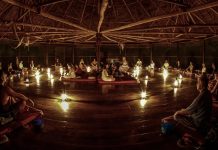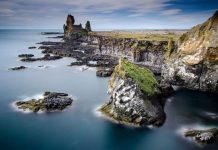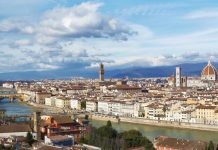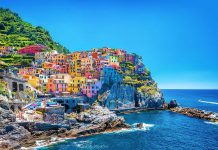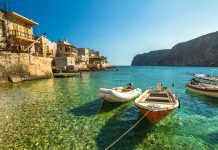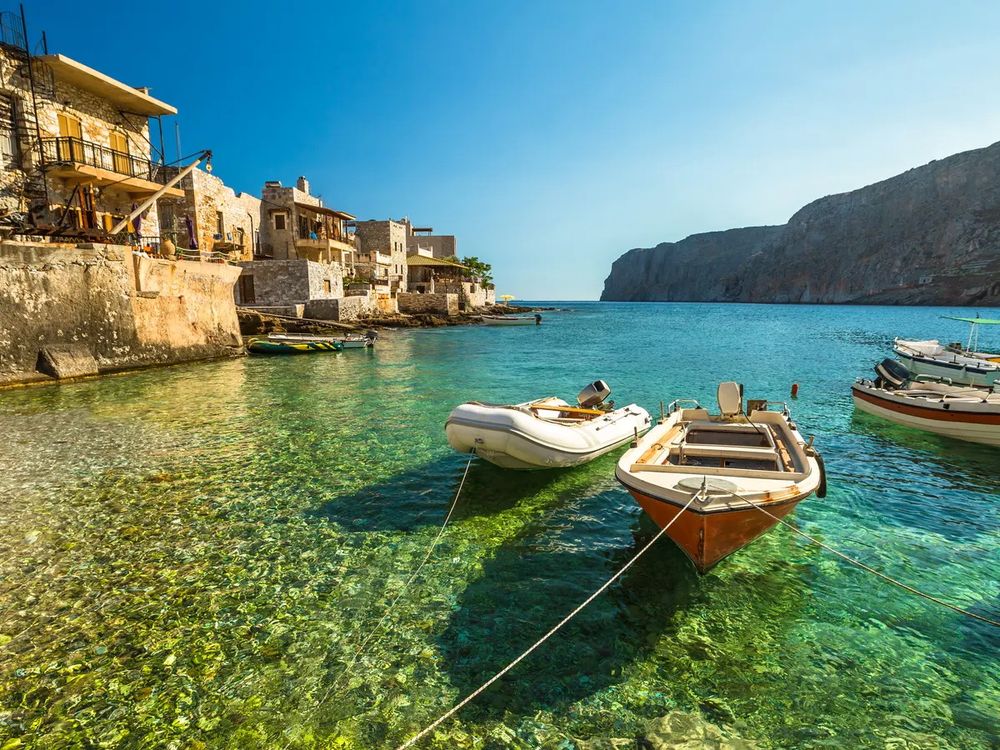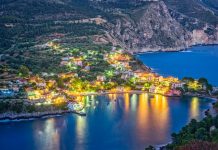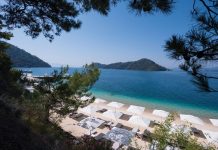Aghia Efimia: Pretty, white chapel at Aghia Efimia port, which gave its name to the village. It is honored on 11 June, with procession.
Aghios Spyridonas: The church of Aghios Spyridonas is located at Argostoli and has an excellent gold-filled woodcut templon, transferred here by the old capital church. Here, it is the starting point of the yearly procession, on 11 August, honouring the victims of the disastrous earthquakes in 1953.
Early Christian basilica at Fiskardo: At Chtouria region, at Fiskardo, an early Christian basilica of the 6th century was discovered. It is said that here, in 1438, the Byzantine emperor Ioannis Paleologos was hosted.
Monastery of Aghios Andreas of Milapidia: It is located 10km far from Argostoli, near Peratata village. It was founded in 1587. In 1639, the Greek Romanian princess Roxane, renamed nun Romila, started her monastic life here and donated a large amount of money to the monastery and brought a valuable spiritual treasure from Mount Athos. This was the Holy remains of the right foot (sole) of Apostle Andreas, with the hole from the crucifixion of the Saint. Today, the monastery is used as an Ecclesiastical museum. The Saint was given the name “Milapidia” (a tree with fruits) , because it is said that his icon was found under that tree.
Monastery of Aghios Gerasimos: Aghios Gerasimos is the patron saint of the island. It is situated at Omala village, in the “valley of 40 wells”, as it is known, at the west of Argostoli. Here, the undecaying relic of the Saint is kept in a glass relic-case within a magnificent silver sarcophagus, placed above the Saint’s tomb, near the entrance for the cave where he lived. He is celebrated twice a year; on 16 August (the day of his death) and on 20 October (the day of the translation of his relics), when the Saint’s remains are brought out and carried in procession to the plane tree, that the Saint has planted.
Monastery of Kipouria: This monastery is located, at the western coasts of Lixouri, 15km from there, in a fascinating location on the edge of a cliff above the sea. It is a very old, historical monastery, built in 17th century. Its name is owned to the many gardens (in greek garden=kipos) that there were in that place. The relics of various Saints are kept in the monastery as well as the sculls of its founders. Today, only a monk lives here and welcomes the visitors not only on 25 March and 14 September, when the monastery is celebrated, but every single day. Don’t miss the view from here during the sunset.
Monastery of Panaghia Kechrionos (Virgin Mary): It was firstly built in the 18th century by Zakynthian sailors. However, the current church was built in 1828. It is mostly famous for the miraculous icon of Panaghia (Virgin Mary). According to the legend, three sailors from Lixouri were captured in Algeria and, the day before the Virgin Mary’s celebration day (14 August), they were praying to her to help them return to their island. When they woke up they found themselves under a small bridge near the monastery. Since then, they decided to restore the monastery and become monks.
Monastery of Theotokos of Sission: The monastery is located at Lourdas cove, in south Kefalonia. It is said that it was built in the 13th century by Aghios Franghiscos of Assisi (San Francisco). Its name, “Sissia”, probably derives from the word Assisi. In the monastery there are considerable portable icons. Today, the important icon of “Virgin of Sission”, which was made in the 15th century and was in the monastery, is at Apostle Andreas museum, at Peratata.
Panaghia Lagouvarda (Virgin Mary): The church is situated at Markopoulo village, 25km far from Argostoli. It was built on the site of the old Virgin’s Monastery which was destroyed by the Turks. It is said that the nuns that were living here, stayed unharmed from the poisonous snakes that appeared on the miraculous icon of Panaghia, known as “Lagouvarda”. Since then, in remembrance of the miracle, every year between the 6th and 15th August harmless snakes appear miraculously on the venerated Virgin’s icon, with a cross on their head. They are considered to be a prophesy of good luck and locals say they did not appear in the year of the earthquake in 1953. The snakes disappear on the day of the festival after they have visited inside the church and have climbed all over the icons.

